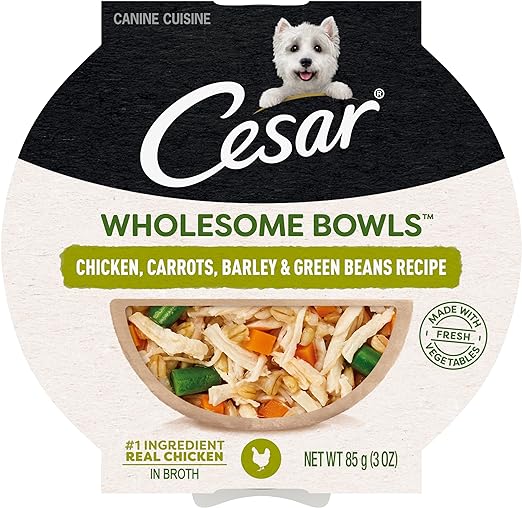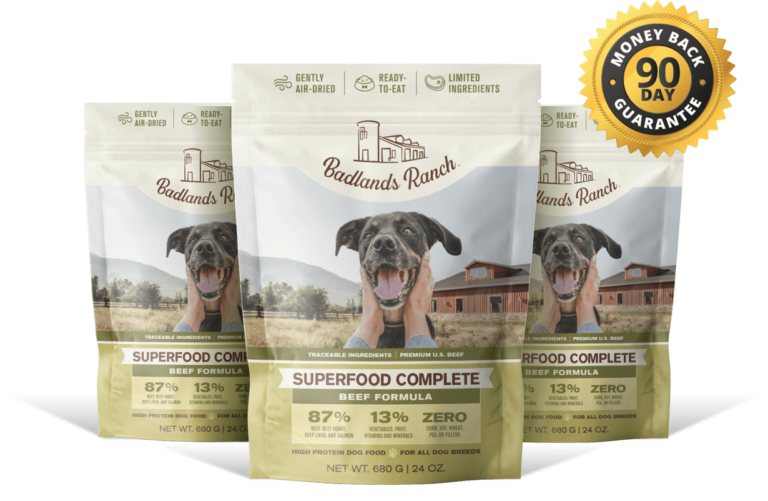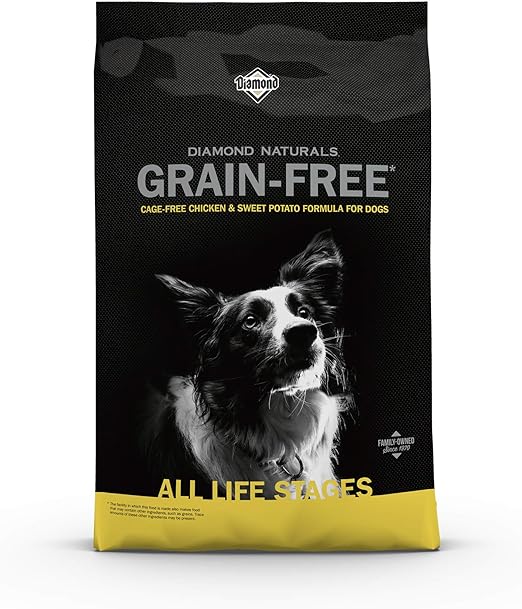Have you noticed that limited-ingredient dog foods are popping up everywhere these days? As a dog parent, you want the best for your furry family member, so you may be wondering if one of these simplified diets is right for them. Limited-ingredient dog foods, often called L.I.D. for short, are formulated with a carefully selected handful of ingredients to avoid potential allergens or sensitivities.
What Is a Limited Ingredient Dog Food?
So what exactly constitutes a “limited ingredient” dog food? While there’s no set definition, most pet parents and vets consider foods with a single animal protein source and one main carbohydrate to fit the bill. The goal is to avoid potential allergens and make the ingredients as digestible as possible for sensitive pups.
A limited ingredient dog food typically contains:
One or two high-quality protein sources: Usually a “novel” protein like bison, duck or salmon that your dog hasn’t eaten before. This makes it less likely to trigger an allergic reaction. Hydrolyzed proteins, where the protein molecules are broken down, are also common.
One or two carbohydrate sources: Simple carbs like rice, oatmeal or potatoes are usually used. Grain-free options may use peas or sweet potatoes. The fewer carbs the better for some dogs.
Essential fatty acids: Important for skin and coat health. Common sources include flaxseed or fish oil.
Vitamins and minerals: Limited ingredient diets are formulated to be nutritionally complete so your dog gets everything they need.
Fewer additives: Artificial colors, flavors and byproducts are left out. Only natural preservatives like mixed tocopherols (vitamin E) are used.
The specific ingredients and nutrients will vary between brands and formulas based on your dog’s needs. Some are tailored for digestive issues, skin allergies or picky eaters. But in general, the simpler the recipe the better. As few as four or five high-quality ingredients can provide real benefits for dogs with sensitivities.
Talk to your vet about whether a limited ingredient dog food may help relieve your pup’s symptoms. Every dog is different, so you may need to try a few brands or recipes to find what works best for them. With time and patience, you can get their diet dialed in and get them on the road to better health and happiness.
Why Choose a Limited Ingredient Diet for Your Dog?
If your pup has a sensitive stomach or itchy, irritated skin, a limited ingredient diet may help provide relief by reducing potential allergens or irritants in their food. Choosing a limited ingredient dog food means your dog will be eating a simpler diet with fewer components, making it easier to determine what ingredients they may be reactive to.
Limited ingredient diets typically contain:
A single source of animal protein, such as salmon, duck or venison, rather than a mix of proteins. This single protein is less likely to cause an allergic reaction.
A limited number of carbohydrates, usually a single source like sweet potatoes or peas. Grains are often left out.
Fewer additives, preservatives and supplements which could potentially trigger a reaction.
Hypoallergenic ingredients that are less likely to cause irritation. For example, hydrolyzed protein sources where the protein molecules have been broken down, making them less likely to cause an immune system response.
By feeding a simplified diet with fewer variables, you have a better chance of pinpointing what ingredients your dog may be allergic or sensitive to. If their symptoms improve on the limited diet, you can then slowly start adding ingredients back one at a time to determine the culprit.
Limited ingredient diets may also be a good choice if you want to feed your dog a diet with whole, natural ingredients and fewer additives or preservatives. While limited ingredient does not always mean “all natural,” many brands do focus on high-quality, natural ingredients.
Talk to your vet about whether a limited ingredient diet may benefit your dog. They can help determine if food allergies or sensitivities may be an underlying issue, and recommend an appropriate limited ingredient food based on your dog’s needs. An elimination diet trial may also be suggested to properly diagnose a food allergy. With the right diet, your dog can get relief from digestive upset or skin problems and enjoy an improved quality of life.
What to Look for in a Quality Limited Ingredient Dog Food
When choosing a limited-ingredient dog food, you want to make sure it provides high-quality, nutritious ingredients that meet your dog’s needs. Here are some things to consider:
• Limited, high-quality ingredients. Look for a short ingredients list with whole, named ingredients you recognize, like meat, grains, or vegetables. Avoid by-products, fillers, and artificial additives. Some of the best limited-ingredient dog foods contain 5-10 ingredients.
• Identifiable protein source. The first ingredient should be an identifiable protein source like beef, chicken, fish or egg. Hydrolyzed or novel proteins like duck, venison or fish are good for dogs with allergies or sensitivities.
• Whole grains or veggies. The next ingredients should be whole grains, like oats or barley, or starchy veggies like sweet potatoes. These provide energy and fiber. Grain-free options use veggies as the main carb source.
• Healthy fats. Essential fatty acids from fish oil or flaxseed promote a healthy coat and skin. Look for named fats like canola or sunflower oil rather than “animal fat.”
• Balanced nutrition. Even with limited ingredients, the food should provide complete and balanced nutrition for your dog’s age, size and activity level. Look for an AAFCO statement on the packaging.
• For all life stages. Unless your vet recommends a puppy, senior or prescription food, choose an all life stages formula suitable for most adult dogs.
• Limited extras. Avoid artificial colors, preservatives and by-products. Limited treats, supplements or table scraps also help determine if the food agrees with your dog.
• Hypoallergenic. For dogs with allergies, look for limited hypoallergenic or hydrolyzed protein formulas to avoid potential triggers. The fewer ingredients the better.
• Veterinarian recommended. Dog foods recommended by veterinarians and veterinary nutritionists are more likely to provide high-quality, balanced nutrition for your dog.
By checking these factors and comparing different products, you can find a delicious, nutritious limited-ingredient dog food tailored to your dog’s needs. Always transition to a new food gradually and if your dog has any issues, talk to your vet.
How to Transition Your Dog to a Limited Ingredient Diet
Transitioning your dog to a limited ingredient diet will take some time and patience. Don’t rush the process, as an abrupt change in diet can upset your dog’s stomach. Follow these steps to safely switch your dog to a limited ingredient food:
Gradually introduce the new food
Mix a little of the new limited ingredient kibble in with your dog’s regular food. Start with just 25% of the new food and 75% of the old. Feed this for 3-5 days so your dog can get used to it.
Slowly make the new food a bigger portion
If your dog is doing well, increase the new food to 50% and keep the old food at 50%. Monitor your dog for any digestive upset or other issues. After a few days of no problems, you can increase the new limited ingredient food to 75% and decrease the old food to 25%.
Completely transition to the new diet
Once your dog has been eating 75% new food and 25% old food for 3-5 days with no issues, you can start feeding 100% of the new limited ingredient diet. Make sure your dog continues to do well on the new food before stopping the old food entirely. Some dogs may need 10-14 days for a full transition to avoid digestive upset.
Watch for any adverse reactions
Even with a gradual transition, some dogs may experience loose stools, gas, or other issues as they adjust to the new diet. If symptoms persist for more than a couple of days, you may need to slow down the transition or try a different recipe. Consult your vet if your dog shows severe or persistent symptoms.
The key is to go slowly and make changes in increments. Limited ingredient diets provide nutritional benefits, but any diet change should be made carefully. By following these tips, you’ll set your dog up for success on his new limited ingredient kibble. If you take things step by step, your dog will transition smoothly to better health and nutrition.
The Benefits of Limited Ingredient Dog Food for Dogs With Allergies
For dogs with allergies or sensitive stomachs, a limited ingredient dog food can be a lifesaver. By containing only a few carefully selected ingredients, these diets reduce the chances of a negative reaction in your pup.
Fewer potential allergens
The fewer ingredients in a dog food, the less likely it is to contain something your dog may be allergic or sensitive to. Common canine allergens include proteins like beef, chicken, and wheat. Limited ingredient diets typically contain exotic, hypoallergenic protein sources like venison, duck or salmon. They also usually skip potentially irritating fillers and byproducts. This “less is more” approach means less gastrointestinal upset and itchiness for your dog.
Easier to digest
With fewer ingredients, limited ingredient dog foods tend to be highly digestible. They are usually made with whole, natural ingredients that are easy on the tummy. Limited ingredient diets also often feature a single source of carbohydrates, like sweet potatoes, rather than a mix of grains that can be hard for some dogs to break down. For dogs with sensitive stomachs or frequent loose stools, the improved digestibility of these diets can make a big difference.
May relieve skin problems
If your dog suffers from chronic skin issues like hot spots, rashes or excessive scratching, a limited ingredient diet could help provide relief. By avoiding potential allergens and irritants, these diets eliminate possible triggers for skin inflammation and irritation. Many dog parents report significant improvements in their dog’s skin and coat health after switching to a limited ingredient dog food.
While limited ingredient diets may be more expensive, for dogs with allergies or sensitivities, the benefits to their health and quality of life can make it well worth the investment. Under the guidance of your vet, transitioning your dog to one of these specialized diets could help get their symptoms under control and allow them to live more comfortably. For dogs with food allergies or intolerances, limited ingredient dog food can be an invaluable tool.
Conclusion
So there you have it, the basics on limited ingredient dog foods explained. As a concerned dog parent, you now understand that these specially formulated kibbles can benefit some dogs with sensitive stomachs or itchy skin by reducing ingredients that may trigger an adverse reaction. You’ve learned that while definitions may vary, most veterinarians consider a limited ingredient diet to contain a single protein and carb source to help pinpoint allergies. And you know that reputable pet food companies formulate their limited ingredient formulas to provide complete nutrition for your pup.
If you’ve been thinking of switching your dog to a limited ingredient food, you’re now equipped with the knowledge to find a formula that suits their needs. Your dog is sure to appreciate you making their health and wellbeing a top priority. And you’ll feel good knowing you’re providing them with a clean, high-quality diet free of excess fillers and additives.





Hi, this is a comment.
To get started with moderating, editing, and deleting comments, please visit the Comments screen in the dashboard.
Commenter avatars come from Gravatar.